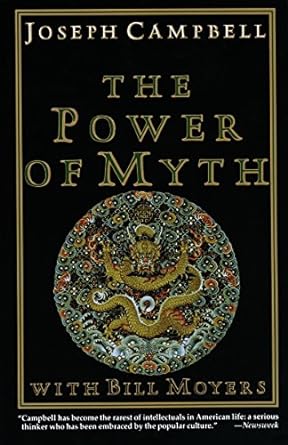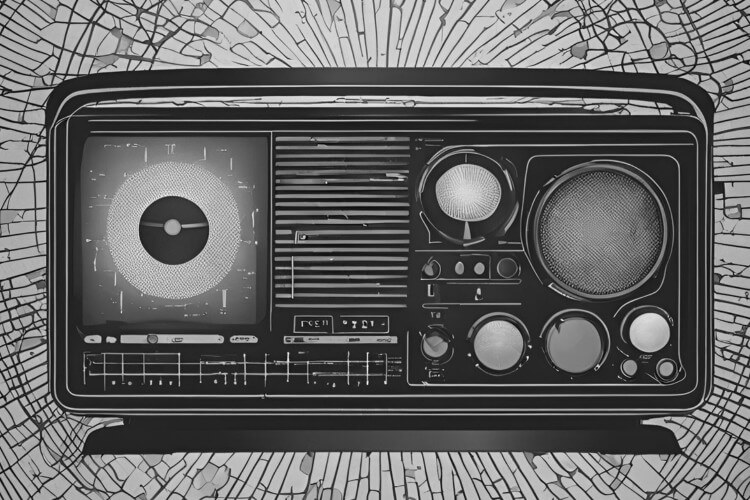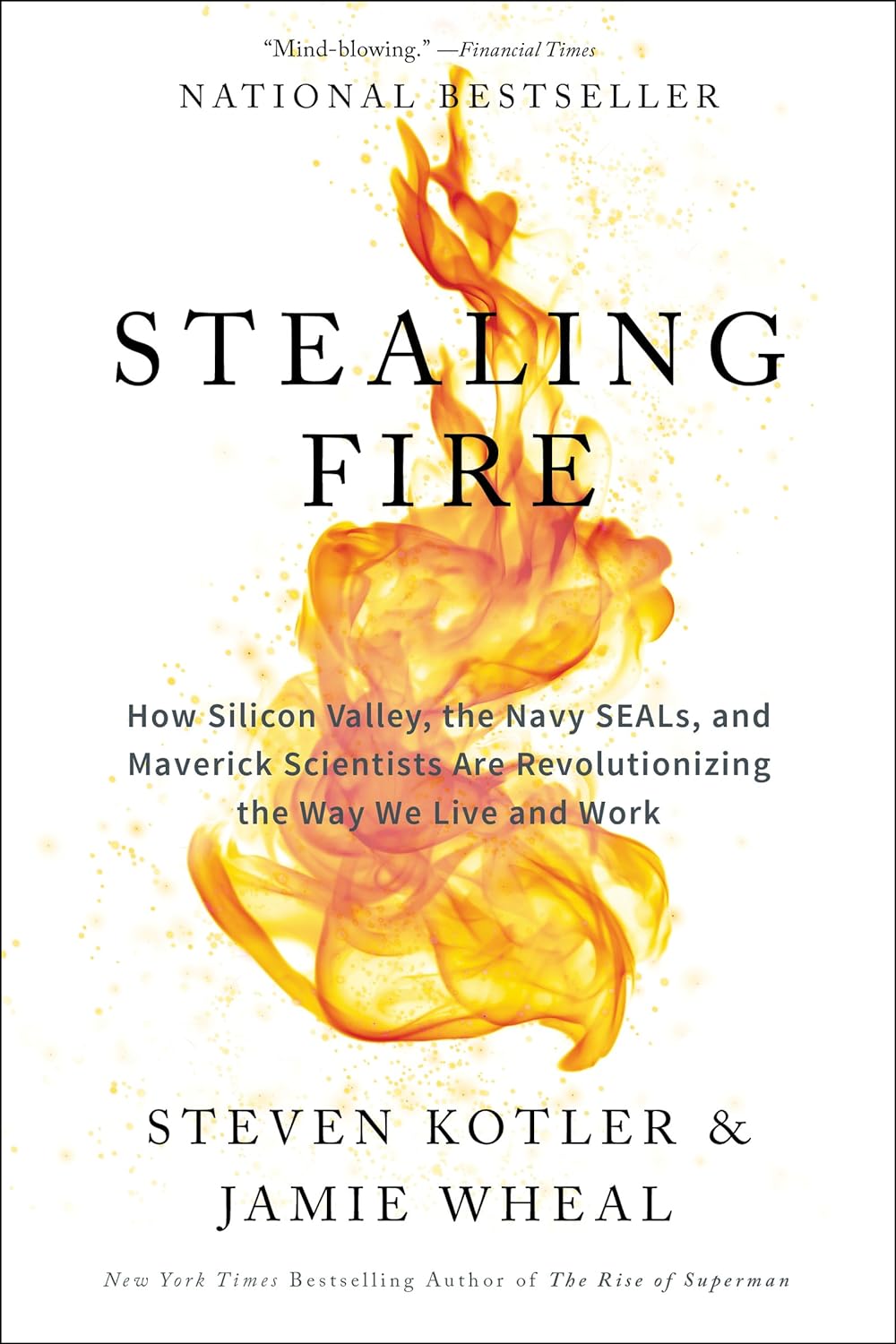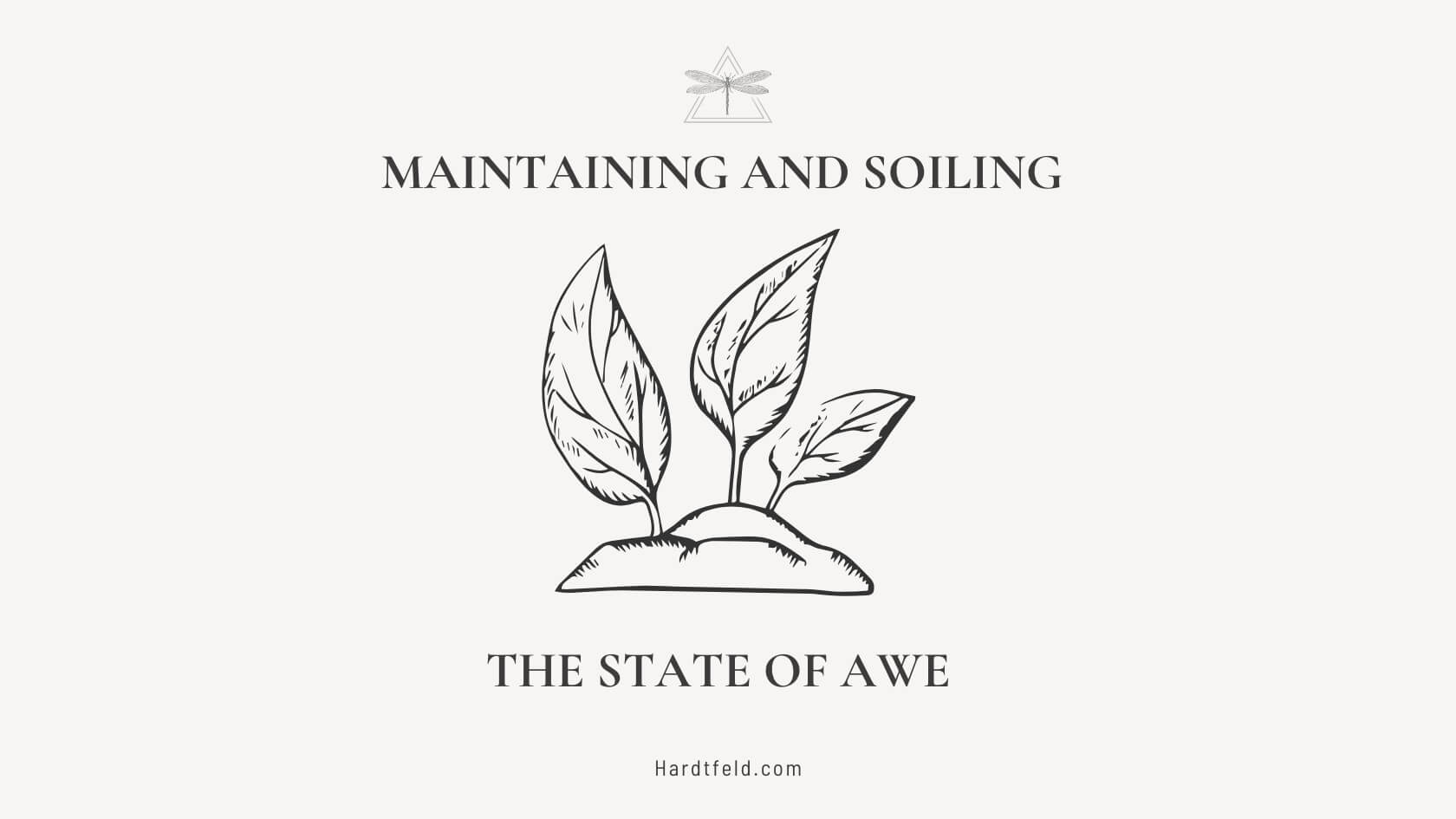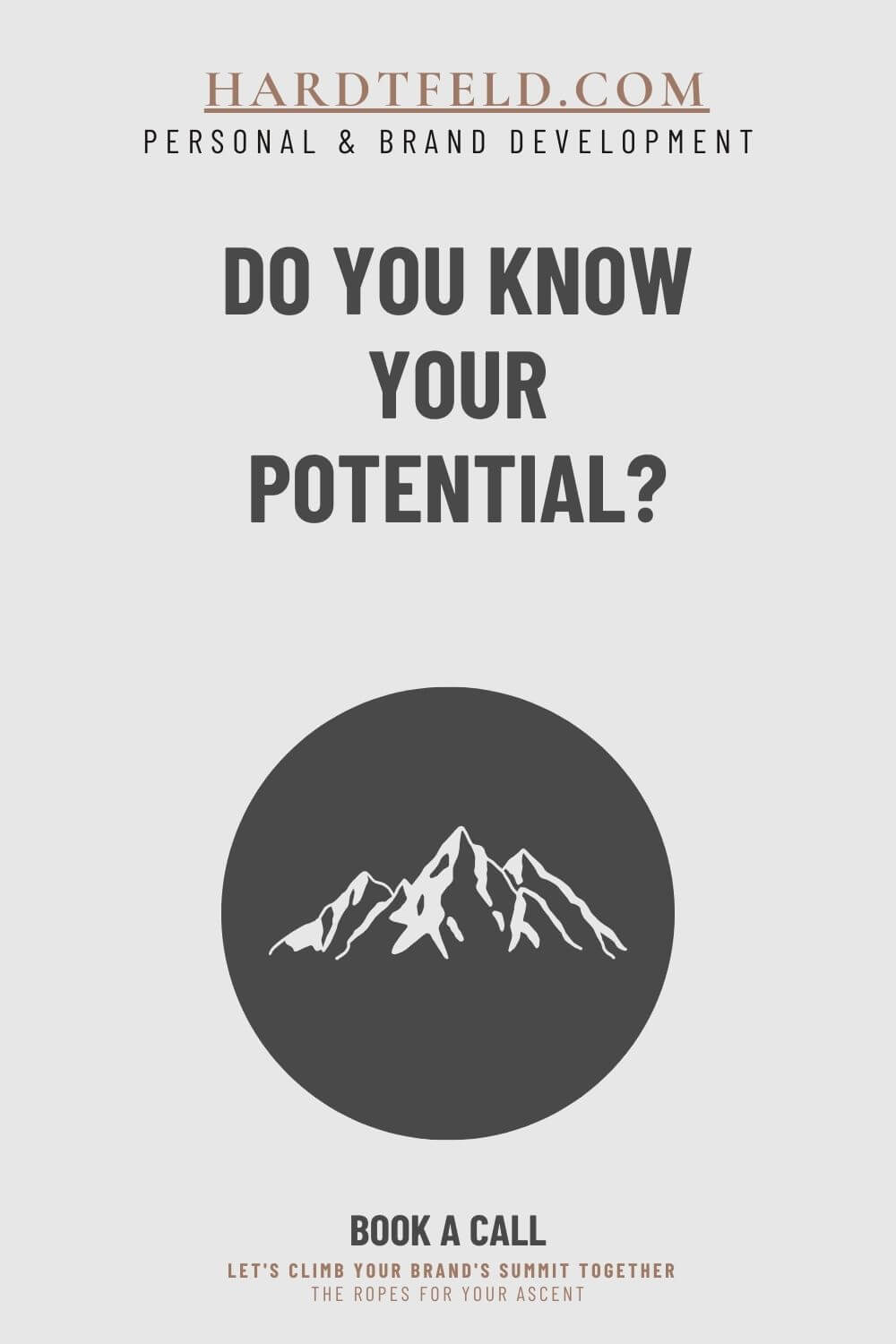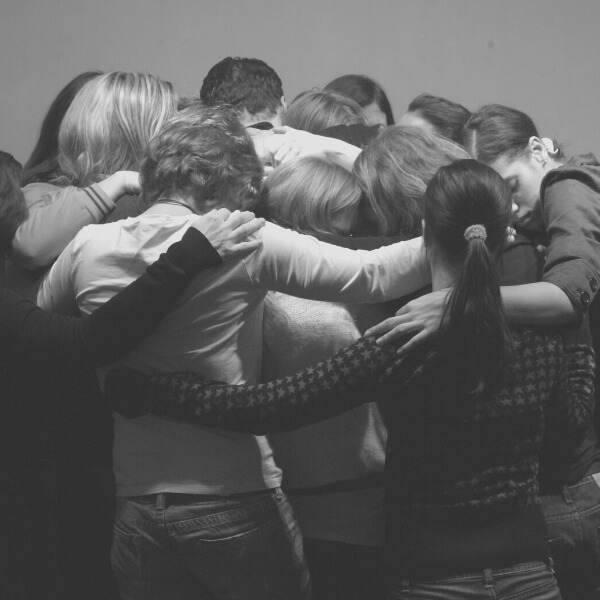FREQUENCIES
The Influence of Resonance on Human Emotions, Moods, and Well-Being: discover the tools and how to use them.

Frequencies – waves and vibrations – encapsulate a fundamental aspect of our perceptible world.
They are the rhythmic oscillations or repetitive patterns of a wave, measured in cycles per second or Hertz (Hz). From the subtle undulations of sound to the energetic pulsations of electromagnetic fields, frequencies form the very essence of our sensory experiences.
At its core, the concept of frequencies is rooted in the fundamental nature of wave propagation. When an object oscillates, it generates waves that travel through a medium, whether it be air, water, or even the vacuum of space. These waves, characterized by their frequency, wavelength, and amplitude, carry energy and information across space and time.
“IF YOU WANT TO FIND THE SECRETS OF THE UNIVERSE – THINK IN TERMS OF ENERGY, FREQUENCY AND VIBRATION.”
Nikola Tesla
The significance of frequencies permeates every facet of our existence.
They orchestrate the symphony of sounds that serenade our ears, from the melodic notes of music to the reverberations of speech. Frequencies also govern the vast spectrum of light that paints our visual world, illuminating the wonders of nature and technology alike.
Harnessing the Power of Vibrational Frequencies:
The Mind-Body Connection
Our thoughts and feelings emit energetic vibrations frequencies. Though imperceptible to the naked eye, they have a tangible impact on our well-being. Positive thoughts and emotions resonate at higher frequencies, creating an environment of vitality, clarity, and joy. Conversely, negative thoughts and emotions vibrate at lower frequencies, potentially leading to feelings of lethargy, stress, and dissonance.
Furthermore, these energetic vibrations are not confined to our inner world. They ripple out into our surroundings, influencing the energy of spaces and even the reactions of those around us.
It’s akin to a silent language communicating our inner state to the universe.
By becoming attuned to the power of our frequencies, we hold the key to shaping our reality. Through mindfulness, positive affirmations, and intentional practices, we can elevate our vibrational state, creating a harmonious resonance between mind, body, and environment. In doing so, we unlock the potential for transformation, inviting a higher, more vibrant way of living into our lives.
The Schumann Resonance: Earth’s Natural Frequency
One of the most intriguing frequencies in the natural world is known as the Schumann Resonance. Named after physicist Winfried Otto Schumann, this phenomenon refers to the resonant frequency of the Earth’s electromagnetic field. In recent years, the Schumann Resonance has garnered attention due to concerns about human-generated electromagnetic interference. The proliferation of electronic devices and wireless technologies has led to discussions about the potential effects of this natural frequency and, consequently, on living organisms.
The Earth’s Heartbeat
The Schumann Resonance linkes to the Earth’s heartbeat, with its fundamental frequency hovering around 7.83 hertz (Hz). This resonance arises from the cavity between the Earth’s surface and the ionosphere, which is about 80 kilometers above.
Synchronization with Brain Waves
Interestingly, the Schumann Resonance is remarkably close to the frequency range of human brain waves, particularly the Alpha and Theta states associated with relaxed awareness and deep meditation. Some theorists suggest a potential correlation between these frequencies and states of consciousness.
Influence on Biological Rhythms
There is ongoing research into the potential impact of Schumann Resonance on living organisms. Studies propose that this natural frequency may play a role in regulating biological rhythms, including sleep patterns and hormone secretion.
Holistic practices and alternative therapies incorporate the concept of the Schumann Resonance in their approach to healing and well-being.
The Influence of Frequencies on Human Experience
- influence various aspects of human experience, including emotions, moods, and overall well-being.
- resonate with our emotional states, potentially amplifying or calming feelings. For instance, lower frequencies, like those found in deep, resonant sounds, may evoke a sense of grounding and tranquility, while higher frequencies can impart a sense of excitement or alertness.
Frequency in the Natural World – Cymatics
A famous experiment involving frequencies and water, was conducted by Dr. Masaru Emoto, a Japanese scientist. He claimed that human consciousness could directly influence the molecular structure of water. Dr. Emoto’s experiments involved exposing water to various stimuli, including music, words, and written intentions, and then freezing the water to observe the resulting crystalline structures.
Biofeedback and Bio-Resonance are alternative therapeutic approaches that utilize frequencies in the context of holistic health and well-being.
Biofeedback provides real-time feedback on physiological processes such as heart rate, muscle tension, and skin temperature. By becoming aware of these processes, individuals can learn to regulate them, potentially leading to improved health outcomes.
Bio Resonance, on the other hand, is based on the idea that every cell, tissue, and organ in the body emits its own unique electromagnetic frequency. Practitioners use specialized devices to measure and analyze these frequencies, identifying imbalances or disruptions in the body’s energy field. This information aimes at restoring balance and promoting healing.
Natural Vibrations of Crystals
Crystals possess unique vibrational frequencies, which can be influenced by factors like temperature, pressure, and impurities. Modalities like crystal healing, color therapy, and energy work operate on the premise that different frequencies have unique healing properties. Practitioners believe aligning the body’s frequencies with specific vibrational energies can promote physical, emotional, and spiritual healing.
Brainwave Frequencies
The frequencies present in our environment, like flowing water or bird songs or from man-made sources like machinery or electronic devices, can have subtle yet tangible effects on our mood and overall sense of well-being.
Alternative Medicine and Energy Healing – Therapeutic Applications
Used in therapeutic settings to address specific emotional or psychological challenges, specific frequencies are employed in sound therapy to alleviate stress, anxiety, or even pain.

Meditation: Binaural Beats / synchronized waves can facilitate the transition into meditative states, enhancing focus and relaxation.
Focus and Productivity: Synchronizing brainwaves to specific frequencies, leads to heightened concentration and productivity.
Stress Reduction and Relaxation: Entrainment techniques can induce deep relaxation, helping to alleviate stress and anxiety.
Sleep enhancement: Exposure to specific frequencies can influence our brainwave patterns through the process of entrainment.
Music and Mood Music is a powerful example of how frequencies impact our emotional state. Different musical notes and harmonies can evoke a wide range of emotions, from joy and exhilaration to introspection and melancholy. Therapy with music often leverages this phenomenon to promote emotional healing and well-being.
These modalities are employed by sound healers and practitioners to facilitate physical, emotional, and energetic healing, as well as to promote states of deep relaxation and meditation. Each modality offers a unique approach to harnessing the therapeutic potential of sound vibrations.
The Influence of Resonance in Sound Healing:
Sound healing modalities encompass a diverse range of instruments and techniques that harness the power of vibrations for therapeutic purposes. Here are some notable sound healing modalities:
Crystal Singing Bowls: These bowls are made from quartz crystal and produce pure, resonant tones when played. Each bowl tuned to a specific note, corresponds to a chakra or energy center in the body.

Tuning Forks: Tuning forks are precision-calibrated metal instruments that emit specific frequencies when struck. They are used to apply focused vibrations to different parts of the body, promoting healing and balance.
Gongs: Gongs produce powerful, multidimensional tones that can induce deep relaxation and meditation. Their rich harmonics can penetrate the body on a cellular level.
Drums: Drumming is an ancient form of sound therapy that involves rhythmic patterns and vibrations. It promotes grounding, stress relief, and even facilitate altered states of consciousness.
Didgeridoo: This Australian Aboriginal instrument produces low-frequency, resonant sounds. Its vibrations are believed to have therapeutic effects on the body, particularly concerning respiratory and circulatory systems.
Singing / Himalayan Bowls (Metal): Similar to crystal bowls, metal singing bowls – made from alloys of various metals – produce complex, harmonious tones and are often used for meditation and relaxation.
Flutes: Native American flutes, bansuris, and other traditional flutes create soothing melodies that can induce a state of calmness and mindfulness.
Voice and Chanting: The human voice is a powerful tool for sound healing. Vocal toning, chanting, and mantra recitation can stimulate energy flow and promote emotional release.
Bells: Various types of bells, including Tibetan bells and Tingsha bells, produce clear, high-frequency tones. They are often used to signal the beginning or end of a sound healing session.
Monochords: Consiststing of a single string stretched over a resonant chamber, this instrument creates a continuous, soothing tone that can induce deep relaxation.
Pyramid Resonance Therapy: Involves the use of pyramids, often made of quartz or other resonant materials, to amplify and direct healing vibrations.
Relevance of Brainwave “Entrainment”
Brainwave entrainment involves using external stimuli, like sound or light pulses, to synchronize brainwave activity.
Binaural Beats
Binaural beats are a fascinating auditory phenomenon that can influence our brainwave activity. They occur when two slightly different frequencies are presented separately to each ear. The brain perceives the difference between these frequencies as a rhythmic pulsing, or “beat,” which is not actually present in the auditory input. For example, if one ear hears a tone at 300 Hz and the other at 310 Hz, the brain perceives a binaural beat of 10 Hz.
These beats have shown potential in various applications. For instance, binaural beats in the Alpha range (around 8 to 14 Hz) may promote relaxation and calmness, making them suitable for stress reduction or meditation. In contrast, beats in the Beta range (around 14 to 30 Hz) may be used to enhance alertness and concentration.
Research suggests that listening to binaural beats can influence mental states, potentially aiding in focus, relaxation, and even sleep. While the science is still evolving, many individuals find binaural beats to be a valuable tool for achieving desired mental states and enhancing their overall well-being.
It is best to use headphones for an effective experience!
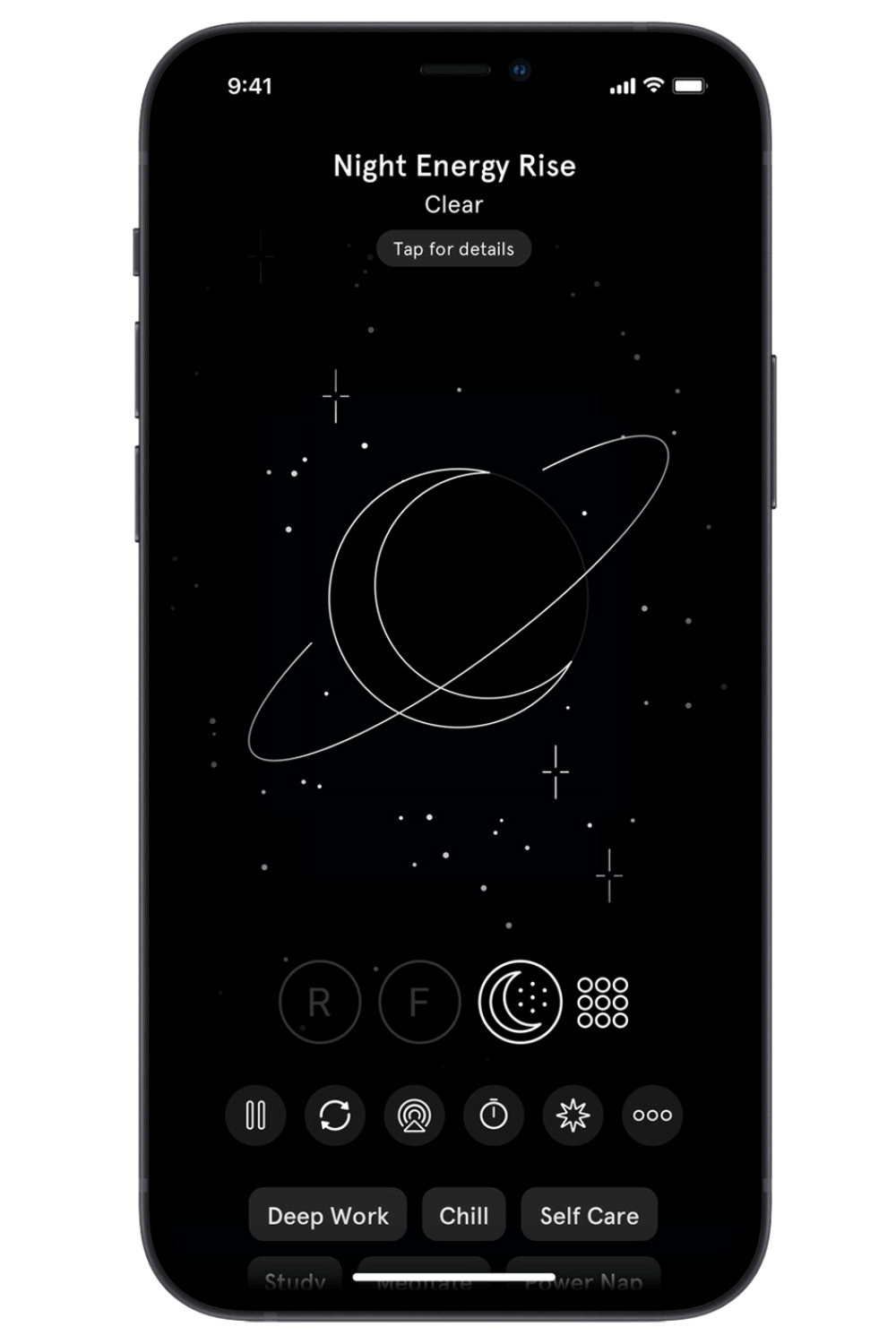
I have been an avid user of ENDEL, a super beautifully designed app that guided me through many rough nights. I don’t have to rely on YouTube playlists disrupted by loud blaring commercials when I try to sleep – or focus during the day.
Try Endel with this free code!
14 days of science-backed sounds to help you focus, relax, and sleep.





